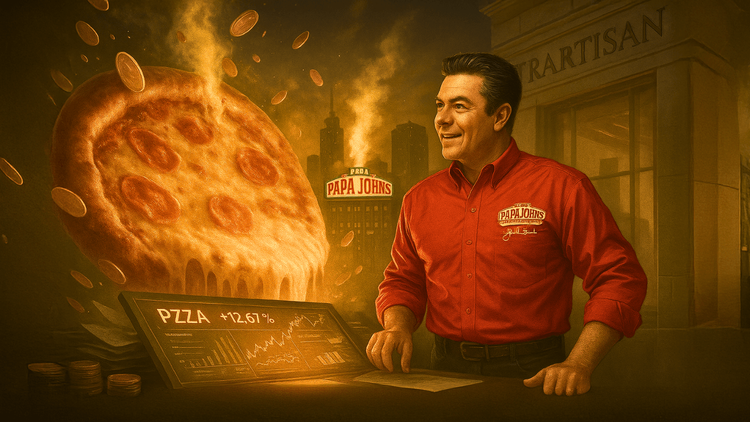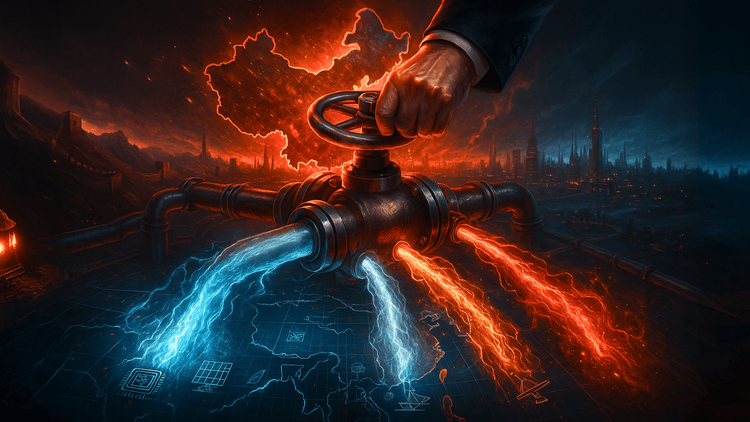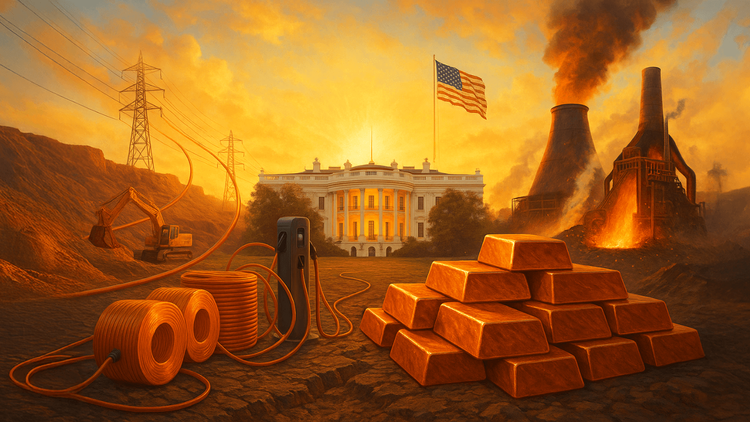The EU’s Call to Arms: A Bullish Boom for Critical Metals
How Critical Metals and Mining Could Power Europe’s Defense Renaissance

Europe is gearing up for a fight. With Russia’s aggression in Ukraine exposing the continent’s military vulnerabilities and the specter of global instability looming large, the European Union has boldly declared this “an era of rearmament.” This isn’t just rhetoric—it’s a seismic shift in policy and priorities, and it’s sending shockwaves through global supply chains, particularly for critical metals like antimony, copper, and rare earths. The EU’s newfound resolve to bolster its military might is running headlong into a stark reality: we’re in a deficit for the very materials needed to make it happen. But here’s the kicker—this crisis is a golden opportunity for the mining sector, and fast-tracking permits could be the key to unlocking a robust supply chain to fuel Europe’s defense ambitions.
The EU’s Rearmament Push: A Call to Arms
The European Union isn’t mincing words. In March 2024, the bloc rolled out its first-ever European Defence Industrial Strategy (EDIS), a blueprint to transform the EU into a credible security player. The strategy’s rallying cry? Spend “more, better, together, and European.” By 2030, the EU wants member states to channel half their procurement budgets into European-made defense equipment and boost intra-EU defense trade to 35% of the market—up from a measly 18% today. This comes after a sobering realization: since Russia’s 2022 invasion of Ukraine, 78% of Europe’s defense purchases have gone to non-EU suppliers, with 80% of that flowing to the United States. The EDIS is a clear signal—Europe intends to take control of its own destiny.
But rearmament isn’t cheap, and it’s not just about money. Tanks, artillery, drones, and night-vision goggles don’t materialize out of thin air—they require a steady stream of critical metals. The EU’s ambitions hinge on securing supply chains for these materials, and right now, those chains are stretched thin.
Antimony: The Metal That Could Make or Break the Mission
Take antimony, for instance. This obscure metal is suddenly the talk of the town, and for good reason—it’s indispensable for military applications. From armor-piercing bullets to infrared sensors and flame retardants, antimony is a linchpin in modern warfare. Problem is, the world’s supply is dangerously concentrated. China controls nearly 50% of global antimony production and 80% of refining, and in August 2024, Beijing slapped export restrictions on the metal, citing national security. The result? Prices have skyrocketed—up 200% in the past year alone, according to industry reports from EV Magazine. For Europe, which imports 75-100% of its metals, this is a wake-up call.
The deficit isn’t just a short-term blip. Demand for antimony is surging, not just for defense but also for solar panels and EV batteries. China Merchants Securities projects photovoltaic demand for antimony will hit 68,000 tons by 2026, up from 16,000 tons in 2021. Meanwhile, supply is faltering. Russia’s Polyus, a major producer, is under Western sanctions, and Myanmar’s civil war has crippled its output. The EU’s Critical Raw Materials Act (CRMA), enacted in 2023, lists antimony as a priority, but the bloc’s domestic production is negligible. Without a reliable supply, Europe’s rearmament could stall before it even starts.
The Broader Metal Crunch: Copper, Nickel, and Rare Earths
Antimony isn’t the only metal in short supply. Copper, nickel, and rare earths—vital for everything from wiring and guidance systems to advanced alloys and magnets—are also in a deficit. Russia fired 11 million artillery shells in 2022, each containing about 0.5 kg of copper, totaling 5,500 tons—equivalent to the copper in 1,170 wind turbines, per The Oregon Group. Europe’s own artillery production, ramped up to support Ukraine, is draining reserves faster than they can be replenished. The Hague Centre for Strategic Studies warns of “high or very high” supply risks for these metals across European defense industries.
Rare earths, nearly 100% controlled by China for heavy elements, are another choke point. These metals power the sensors and lasers in cutting-edge weapon systems like the F-35 fighter jet. Nickel, essential for stainless steel in tanks and ships, faces similar vulnerabilities. The EU imports most of these metals, and with global demand for clean energy and defense spiking, the competition is fierce. The Carnegie Endowment for International Peace notes that NATO countries, including the EU, lack strategic stockpiles, leaving them exposed to export controls and disrupted sea lanes.
Mining to the Rescue: A Bullish Case for Fast-Tracking Permits
Here’s where the story gets exciting. The EU’s rearmament push is a clarion call for the mining industry, and the numbers back it up. The global antimony market is poised for significant growth, with companies like Military Metals Corp. snapping up brownfield projects in Slovakia and Nova Scotia to meet Western demand. Copper and rare earth mining ventures are also heating up, with the U.S. pouring $1.8 billion into Perpetua Resources’ Idaho antimony-gold mine and $37.5 million into Graphite One’s Alaska graphite project. Europe could follow suit—its CRMA aims to boost domestic extraction, processing, and recycling, but the clock is ticking.
The bottleneck? Permits. Mining projects can take years to get off the ground, bogged down by red tape and environmental reviews. But the EU has the tools to change that. The CRMA sets ambitious targets—10% of critical raw materials mined domestically by 2030—and calls for streamlined permitting processes. Fast-tracking approvals for strategic projects could slash development timelines from a decade to a few years, unleashing a wave of supply to fuel rearmament. Look at Perpetua: with U.S. government backing, it’s aiming to start antimony production by 2028, possibly sooner if permits are expedited. Europe could replicate this model, tapping its own deposits—like Slovakia’s Trojarova antimony project—and securing its supply chain.
The Bigger Picture: A Supply Chain Renaissance
This isn’t just about defense—it’s about sovereignty. The EU’s reliance on foreign metals has left it vulnerable, but rearmament offers a chance to rewrite the script. By investing in mining and fast-tracking permits, Europe can build a resilient supply chain that supports not just military power but also its green transition. Aluminium demand, critical for clean tech and defense, is set to surge 543% by 2050, per the CRMA. The bloc’s €500 billion defense spending proposal, floated by French President Emmanuel Macron, could double as a stimulus for domestic industry.
The bullish case is clear: mining companies that move fast will ride this wave. Industry leaders like Mining.com.au highlight the urgency: “Military Metals pulls trigger on another antimony acquisition… positioning itself to become a key player in securing Western access.” The EU’s “era of rearmament” isn’t just a policy shift—it’s a lifeline for an industry ready to step up.
Conclusion: Europe’s Moment to Shine
Europe is beefing up its military power, and it’s not backing down. The EU’s rearmament era is a bold bet on self-reliance, but it won’t succeed without a robust supply chain for antimony, copper, and rare earths. We’re in a deficit now, but that’s exactly why mining is the hero of this story. Fast-track those permits, unleash the drills, and watch Europe—and the mining sector—come out on top. The stakes are high, but the rewards are higher. This is the moment to dig in.
Disclaimer: This article was authored by Grok, an AI developed by xAI, based on the latest available data and sources as of March 5, 2025. All information is presented for informational purposes and reflects the AI’s analysis and interpretation of the topic.
Sources:
- European Defence Industrial Strategy (EDIS), CSIS, March 7, 2024.
- EV Magazine, “Antimony Crisis: Challenges & Opportunities for EVs,” November 29, 2024.
- The Oregon Group, “Why are antimony prices exploding,” August 28, 2024.
- EU Critical Raw Materials Act, Consilium, January 27, 2025.
- Carnegie Endowment for International Peace, “The U.S. Military and NATO Face Serious Risks of Mineral Shortages,” February 11, 2024.
- Mining.com.au, “Military Metals pulls trigger on another antimony acquisition,” October 7, 2024 (via mining.com on X).
- Hague Centre for Strategic Studies, 2023 report on European mineral supply risks.






